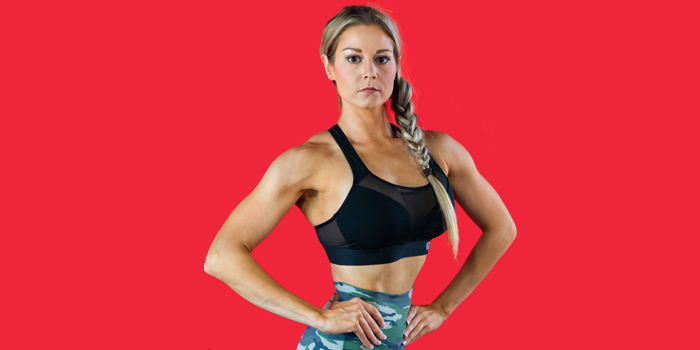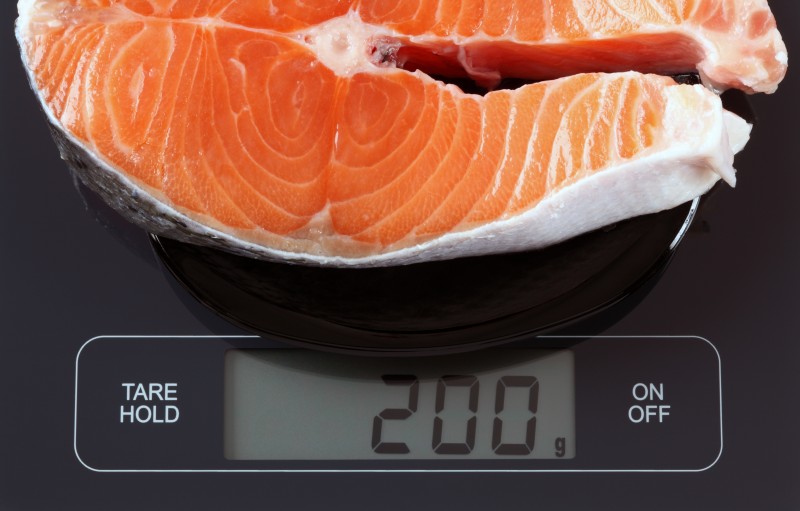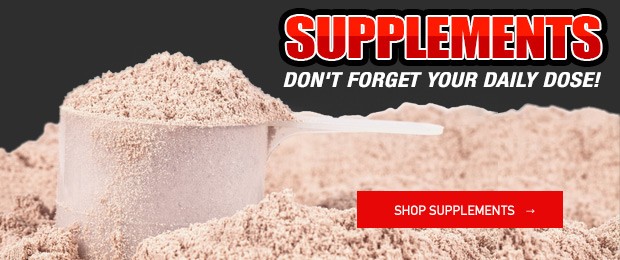
“Why isn’t my diet working?”
“What am I doing wrong?”
“I can’t seem to figure this out.”
Sound familiar? I hear these things all of the time, and I want to shed some light on why your diet might not be working for you. To clarify, I will focus on fat loss as the target goal here. When it comes to fat loss, very few people can wing it and see decent results. That’s just the reality despite what the detox tea Fitspos are telling you. Sustainable fat loss requires mindfulness and a strategy that is specific to you. So, let’s get to it. These are the top five reasons your diet isn’t working, and how to execute it properly.
1. You aren’t tracking anything.
Simply put, if you can measure it, you can manage it. The truth is, you can attempt to lose body fat without tracking calories or macronutrients. However, it most likely won’t be optimal or sustainable. You may see some results at first but will plateau and end up frustrated at some point. Tracking calories and macros just gives you a roadmap to your destination. Without a map, your journey gets really inefficient and takes forever due to a lot of unnecessary pit stops and hassle.
MORE: 3 Questions to Answer Before Your Next Diet
Tracking also teaches you what is in food and what you respond well to so that you can develop your intuition about food. If your goal is to change your body composition, you can’t eat intuitively without being educated first. Ideally, you can learn about tracking through your fat loss phase and slowly become intuitive as you maintain your goal! That is the whole point. But you can’t get there without putting in the time to build food awareness and knowledge. Tracking is the first stop on your roadmap. If tracking your food is new to you, start with calories first for the first two weeks. Just see where you are naturally falling, and then you can adjust from there. Once you become proficient at tracking your general intake, you can then transition to tracking specific macronutrients.
2. You are tracking incorrectly.
You can track calories and macros all day, but it clearly will not serve its purpose if you aren’t doing it correctly. Eyeballing does not work! Make it a priority to measure your food and learn what true portions should look like for the macros/calories you are shooting for. We always underestimate the caloric loads of the portions we see in restaurants. So, we need to retrain our brains to learn what an actual 4-oz chicken breast looks like. There is also a difference between volume and weight measurements of food. Weighing food is more accurate than using volume measurements. So, especially for someone trying to get pretty lean, weighing food will be the way to go.

Ekaterina Minaeva © 123rf.com
Also, keep in mind that food labels can be incorrect when it comes to their gram-to-volume conversions. For example, old-fashioned oats might say something like ½ cup or 40g will yield 27g carbs. However, when I scooped ½ cup oats and weighed it, it was actually 52g. So, if I used the volume measurement all of the time, I would be over my carbs daily without realizing it. This may seem nitty gritty; however, if you are trying to achieve a more advanced level of leanness, this will matter greatly. This same concept applies to weighing foods cooked versus raw. This is more relevant when it comes to meat. Cooked-weight macros and raw-weight macros are not the same. As we cook meats, water evaporates from the meat, leaving it “lighter” post-cooking. Therefore, 4oz of raw chicken is about 3.2oz cooked for the same macros. So, my suggestion is to use whatever method you feel comfortable with, whether it be volume or weight, but if you are trying to achieve a high level of leanness, stick with weight measurement.
3. Your energy expenditure is too low.
Don’t make your fat loss efforts harder than they need to be. This is why I have clients track their steps to make sure that we are at least in the ballpark of general energy expenditure. If you are unknowingly getting 2,000 steps a day, your caloric deficit will need to be extreme to see fat loss. However, if you can get your daily steps closer to the 8,000+ range, it will be so much easier to lose body fat, and you will be able to eat more to do so! I highly recommend tackling daily steps before adding or increasing structured cardio into your regimen. I see this mistake a lot.
MORE: Birth Control and the Female Athlete
Getting on the StairMaster for 20 minutes three times a week is fine, but if your general activity isn’t high enough, first, you will not get the most out of this additional cardio. Get your daily-steps activity up first, THEN add structured cardio only if needed. Going balls out on cardio out the gate without addressing steps first will just put unnecessary stress on the body without the efficacy that general steps would elicit. We burn more calories from daily activity than we do from workouts! So, make sure that you are picking up the dollars before the pennies here.
4. You are not being patient.
“Fast” and “fat loss” should never belong in the same sentence. Except for this one: Fat loss is not meant to be fast! Our bodies can only lose so much body fat in a day, in a week, in a month. Typically, one pound a week is ideal on average. However, when starting the fat loss phase, you may lose more than this at first from any water retention you were holding. The initial weight drop on the scale during the first week of the fat loss phase is usually a mix of fat and water weight. But the weight loss should slow down. This is a natural and good sign. If you want the majority of your weight loss to come from fat, then you need it to be slow. Stop setting your expectations for what actually does not exist. Fast fat loss is not a real thing! Expecting fat loss to be fast is like expecting Santa Claus to show up at your house on Christmas Day. Not gonna lie—that would be cool. But we learned that this sh*t wasn’t real before we turned 10. Same concept here. The more patience you have, the more successful you will be.
5. You are not addressing your lifestyle.
Set yourself up for success and create an optimal foundation of health before initiating the fat loss phase. Super stressed? Hormones out of whack? Only get four hours of sleep a night? Good luck losing body fat with all of that going on. Don’t get me wrong—you can do it, but it’s going to be a huge pain in the ass. So, take care of your foundation first before you start adding drapes to your windows. Take an honest look at your life. How can you manage stress better? If you feel like sh*t, get a hormone panel done and see what’s going on inside and address it. I’ve had numerous clients start the fat loss phase, and I noticed that their progress wasn’t of the norm, so we got labs run, and lo and behold, their thyroids were clinically low, and their sex hormones were similar to those of a 65-year-old. By addressing these pieces first, we can then set up a much more optimal and efficient fat loss phase in the future. Not addressing underlying issues is going to make fat loss damn near impossible, so getting lifestyle factors in line will serve you in the long run. If not, you will see very subpar results and could actually make those underlying issues worse over time. Sometimes you need to take two steps back to take three steps forward.
I hope that this article gives you some guidance and direction for your fat loss efforts. It truly comes down to the little things we do each day that add up to our ultimate outcome. Take care of the little sh*t first so that you can manifest your goals efficiently, healthfully, and sustainably.











Another one I encounter every day are these "low-calorie" breads.
One brand I like says a serving of 3 slices is 110 calories. But next to 3 slices it says (54 grams). So when you actually weigh 3 slices of that bread, it might weigh 76 grams. So I do the math and enter 1.407 servings in MyFitnessPal. Big difference over time.
Another one is protein powder "scoops." In fat loss I try to avoid using protein powder period, because you don't want to drink calories (don't stay full), and when you use it in a lot of popular baking/cooking recipes, it adds a bunch of calories (about 130) without adding hardly any volume.
But anyway the scoops NEVER are actually the serving size you think it is. I always weigh out protein powder so I know I'm getting the 38 grams I'm expecting. It also makes it a lot easier to accurately measure "half-scoops."
I literally did this today! Get out of my head! I use two 1/4 cup scoops and I got something like 36 g with my first scoop. Was going to ask you about whether to go by weight or volume.
Yes when your food is important, but getting it accurate to the hundredth of an ounce is not. Focus on the big things like getting more sleep, lowering stress levels, coming up with a better program. Do not obsess over the thousands of a percentage point or debating which of nine different types of grains are best for your diet. Obsessing over details that don't make much difference is just a form of procrastination and avoidance of the big habits that are wrecking your results.
Once you get all those big habits taken care of, you have earned the right to focus on micro details much like an Olympic athlete might. But, not before.
Darryl Cross
NASM Master Trainer
Thanks for reading. And absolutely! Weight measurement is the way to go if someone is looking for diligent accuracy.
Yep!! lol. I don't care too much if I am not in a fat loss phase, but when I am I gotta weigh everything. It all adds up!
Thanks for reading!
For sure. I personally don't get too crazy with it unless I am in a strict fat loss phase or prep. Or if I have a client who is just freakin stubborn...then we will whip out the big guns lol.
But yep definitely not something to stress over with a beginner.